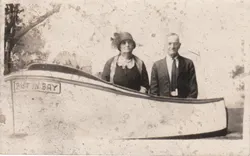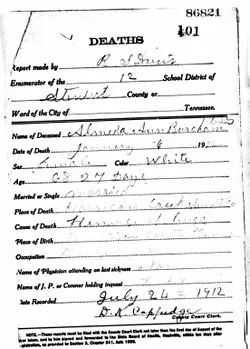
Genealogy is a field that relies heavily on the availability of records and documents. For those interested in preserving their family history for future generations, leaving a comprehensive genealogy paper trail is essential.
Research your ancestors on MyHeritage
Importance of a Genealogy paper trail
A genealogy paper trail serves several purposes:
- Preservation of Family History: It allows future generations to understand their heritage, the origins of their ancestors, and the historical context in which they lived.
- Verification of Information: A well-documented paper trail enables future genealogists to verify the accuracy of family stories and records.
- Personal Legacy: It ensures that your own life story is not lost over time, providing future generations with a personal connection to their past.
- Cultural Continuity: It helps in maintaining traditions, values, and customs within the family, fostering a sense of belonging and identity.
Steps to Create a Comprehensive Genealogy Paper Trail
1. Start with Yourself
The most logical place to begin your genealogy paper trail is with your own life. Document the following:
- Vital Records: Keep copies of your birth certificate, marriage certificate, and other legal documents like passports, driver’s licenses, and social security cards. These documents are essential for verifying your identity and your role in the family tree.
- Autobiography: Write a detailed autobiography that includes key life events, personal achievements, and significant experiences. Include anecdotes, personal reflections, and insights into your values and beliefs.
- Photographs and Media: Preserve photographs, videos, and other media that document your life. Annotate them with dates, locations, and descriptions to provide context.
- Personal Letters and Emails: Save copies of personal correspondence, including letters and significant emails. These can provide future genealogists with a glimpse into your relationships and thoughts.
- Diaries and Journals: If you keep a diary or journal, consider preserving these as part of your genealogy paper trail. They offer intimate insights into your daily life and emotions.
2. Document Your Immediate Family
After documenting your own life, the next step is to gather information about your immediate family:
- Family Records: Collect vital records for your spouse, children, and any other close relatives. These include birth certificates, marriage licenses, death certificates, and adoption papers.
- Family Stories: Record family stories, traditions, and customs. Interview older family members to capture their memories and experiences. Oral histories can be invaluable for understanding the family dynamic and the context in which events occurred.
- Photographs and Media: Just like your own life, document the lives of your immediate family through photographs, videos, and other media. Annotate these with relevant information to ensure they are meaningful to future generations.
- Educational and Professional Achievements: Preserve records of your family members' education and professional achievements, such as diplomas, certificates, awards, and resumes. These documents help paint a complete picture of their lives and contributions.
3. Expand to Extended Family
Once your immediate family’s information is documented, expand your efforts to include extended family members:
- Genealogical Research: Research your extended family, including grandparents, aunts, uncles, cousins, and other relatives. Utilize census records, immigration records, military records, and other historical documents to build a more comprehensive family tree.
- Family Reunions and Gatherings: Attend family reunions and gatherings, and use these opportunities to gather stories, photos, and other records. Encourage family members to contribute their own documents to the family archive.
- Shared Resources: Create a shared family archive or online repository where extended family members can upload and share documents, photos, and stories. This collective effort can enrich the overall genealogy paper trail.
4. Organize and Preserve Your Records

Organization is key to creating a useful genealogy paper trail. Here are some tips for organizing and preserving your records:
- Categorize Documents: Sort documents into categories such as vital records, personal letters, photographs, and official documents. Create subcategories as needed for easier access.
- Label and Annotate: Label all documents, photographs, and media with relevant information, including names, dates, locations, and descriptions. Annotations provide context and help future generations understand the significance of each item.
- Use Technology: Consider digitizing your records to create electronic backups. Digital files are easier to share and can be preserved for longer periods if properly maintained. Use cloud storage or dedicated genealogy software to organize and store your digital records.
- Physical Storage: Store physical documents in acid-free folders and boxes to prevent deterioration. Keep them in a cool, dry place away from direct sunlight. Consider donating copies of important documents to local archives or genealogy societies for additional preservation.
5. Share Your Genealogy Paper Trail
A genealogy paper trail is only useful if it can be accessed by future generations. Consider the following ways to share your work:
- Family Website or Blog: Create a family website or blog where you can upload your genealogy research, documents, and stories. This allows family members and future generations to easily access the information.
- Genealogy Databases: Upload your family tree and related documents to online genealogy databases like MyHeritage. This allows other researchers to discover and verify your work.
- Printed Family History Book: Consider compiling your research into a printed family history book. Include narratives, photos, documents, and family trees. Distribute copies to family members and donate copies to libraries or genealogy societies.
- Social Media: Use social media platforms to share family stories, photos, and research updates with your extended family. Private family groups on platforms like Facebook can facilitate collaboration and information sharing.
Ethical considerations

When creating a genealogy paper trail, it’s important to consider the ethical implications:
- Privacy: Be mindful of the privacy of living relatives. Obtain their consent before sharing sensitive or personal information online or in public records.
- Accuracy: Strive for accuracy in your research and documentation. Avoid making assumptions or including unverified information, as this can lead to misinformation being passed down through generations.
- Cultural Sensitivity: Respect the cultural and religious practices of your family members. Be sensitive to how certain information might be perceived or interpreted by different members of your family.
Creating a genealogy paper trail is a valuable gift to future generations, providing them with a rich and detailed account of their heritage. By documenting your life, preserving records, and sharing your findings, you ensure that your family history is not lost to time. Whether through physical records, digital archives, or published works, your efforts will help keep the story of your family alive for generations to come.
Explore more about how to leave your own genealogy paper trail
- Your Ancestors Didn't Leave a Paper Trail: Are You? webinar at Legacy Family Tree Webinars
- Leaving a paper trail – Other German sources besides church books and civil records webinar at Legacy Family Tree Webinars


